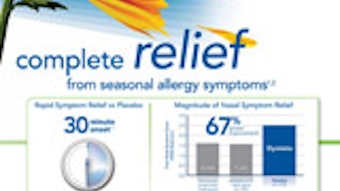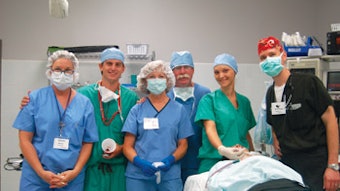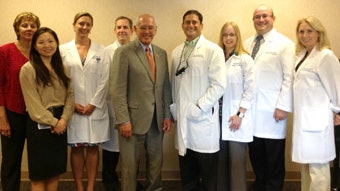Where Do We Go From Here? Attacking the Larger Problems in Safety and Quality
Rahul K. Shah, MD, George Washington University School of Medicine, Children’s National Medical Center, Washington, DC. A few years back, there was real concern whether the patient safety and quality improvement renaissance following the Institute of Medicine’s report in 1999 was real. In other words, were we moving the needle in actually reducing adverse events, near misses, and medical errors? This is a very basic, albeit profound question. Some experts had questioned if focusing tremendous attention on patient safety and quality improvement was taking limited resources away from other competing priorities. Within the last few years there have been myriad studies actually demonstrating an improvement in outcomes and other concomitant patient safety/quality improvement metrics in varying practice settings. It is of course exciting to see the needle move and the tremendous efforts of providers, such as our Academy members, working to improve the quality of care for our patients. How did the needle move? A trite answer is that there were so many opportunities that focusing on the low-hanging fruit was productive. Indeed, our Academy employed similar strategies when creating a prioritization matrix for patient safety and quality improvement work. The bigger question is: What do we do now? How can we attack the larger problems and move the needle a similar magnitude? There are several large databases and quality improvement platforms, which I will refrain from naming, that are perhaps the wrong strategy (and I do not want to implicate any platform per se). Instead of macro-level snapshots of data, many of us believe that targeted, specialty-specific initiatives will be necessary to make an impact and go after the more elusive specialty-specific issues. For example, Atul Gawande, MD, and his research team made incredible contributions to the understanding of the role of checklists, especially for surgery. The next iterations may be specialty-specific or case-specific checklists. Indeed, I know of many specialty practices, surgery centers, and hospitals that have such specialty/procedure-specific checklists to customize a standardized process. The next generation of patient safety and quality improvement will undoubtedly require a tremendous amount of resources, as it will be geared toward specific groups of providers (emergency department physicians, hospitalists, psychiatrists, etc.). Furthermore, it will require a much broader group of leaders, as there will be hundreds of competing initiatives. An example is the Hospital Engagement Networks (HEN) that many of our hospitals participate in. These networks are essentially huge collaboratives in which hospitals get together to look at aggregate macro-level data, as well as best practices, to collectively improve the care in their own hospitals and for the HEN itself. To my knowledge, there are no specific HEN metrics that are pertinent specifically to otolaryngology-head and neck surgery. I am aware of quality improvement collaboratives that are beginning in our specialty that are slowly gaining traction and will most certainly be highlighted in this column as they mature. Nevertheless, the future of patient safety and quality improvement could not be more exciting. The prior decade has shown that the needle has moved and the future looks promising that the needle will continue to move. As expected, there will be different strategies and techniques that will be required to move the needle in this decade, but we are on the right track and there will certainly be more involvement among our specialty and our members. We encourage members to write us with any topic of interest, and we will try to research and discuss the issue. Members’ names are published only after they have been contacted directly by Academy staff and have given consent to the use of their names. Please email the Academy at qualityimprovement@entnet.org to engage us in a patient safety and quality discussion that is pertinent to your practice.

A few years back, there was real concern whether the patient safety and quality improvement renaissance following the Institute of Medicine’s report in 1999 was real. In other words, were we moving the needle in actually reducing adverse events, near misses, and medical errors? This is a very basic, albeit profound question. Some experts had questioned if focusing tremendous attention on patient safety and quality improvement was taking limited resources away from other competing priorities.
Within the last few years there have been myriad studies actually demonstrating an improvement in outcomes and other concomitant patient safety/quality improvement metrics in varying practice settings. It is of course exciting to see the needle move and the tremendous efforts of providers, such as our Academy members, working to improve the quality of care for our patients.
How did the needle move? A trite answer is that there were so many opportunities that focusing on the low-hanging fruit was productive. Indeed, our Academy employed similar strategies when creating a prioritization matrix for patient safety and quality improvement work.
The bigger question is: What do we do now? How can we attack the larger problems and move the needle a similar magnitude? There are several large databases and quality improvement platforms, which I will refrain from naming, that are perhaps the wrong strategy (and I do not want to implicate any platform per se). Instead of macro-level snapshots of data, many of us believe that targeted, specialty-specific initiatives will be necessary to make an impact and go after the more elusive specialty-specific issues.
For example, Atul Gawande, MD, and his research team made incredible contributions to the understanding of the role of checklists, especially for surgery. The next iterations may be specialty-specific or case-specific checklists. Indeed, I know of many specialty practices, surgery centers, and hospitals that have such specialty/procedure-specific checklists to customize a standardized process.
The next generation of patient safety and quality improvement will undoubtedly require a tremendous amount of resources, as it will be geared toward specific groups of providers (emergency department physicians, hospitalists, psychiatrists, etc.). Furthermore, it will require a much broader group of leaders, as there will be hundreds of competing initiatives. An example is the Hospital Engagement Networks (HEN) that many of our hospitals participate in. These networks are essentially huge collaboratives in which hospitals get together to look at aggregate macro-level data, as well as best practices, to collectively improve the care in their own hospitals and for the HEN itself.
To my knowledge, there are no specific HEN metrics that are pertinent specifically to otolaryngology-head and neck surgery. I am aware of quality improvement collaboratives that are beginning in our specialty that are slowly gaining traction and will most certainly be highlighted in this column as they mature.
Nevertheless, the future of patient safety and quality improvement could not be more exciting. The prior decade has shown that the needle has moved and the future looks promising that the needle will continue to move. As expected, there will be different strategies and techniques that will be required to move the needle in this decade, but we are on the right track and there will certainly be more involvement among our specialty and our members.
We encourage members to write us with any topic of interest, and we will try to research and discuss the issue. Members’ names are published only after they have been contacted directly by Academy staff and have given consent to the use of their names. Please email the Academy at qualityimprovement@entnet.org to engage us in a patient safety and quality discussion that is pertinent to your practice.











